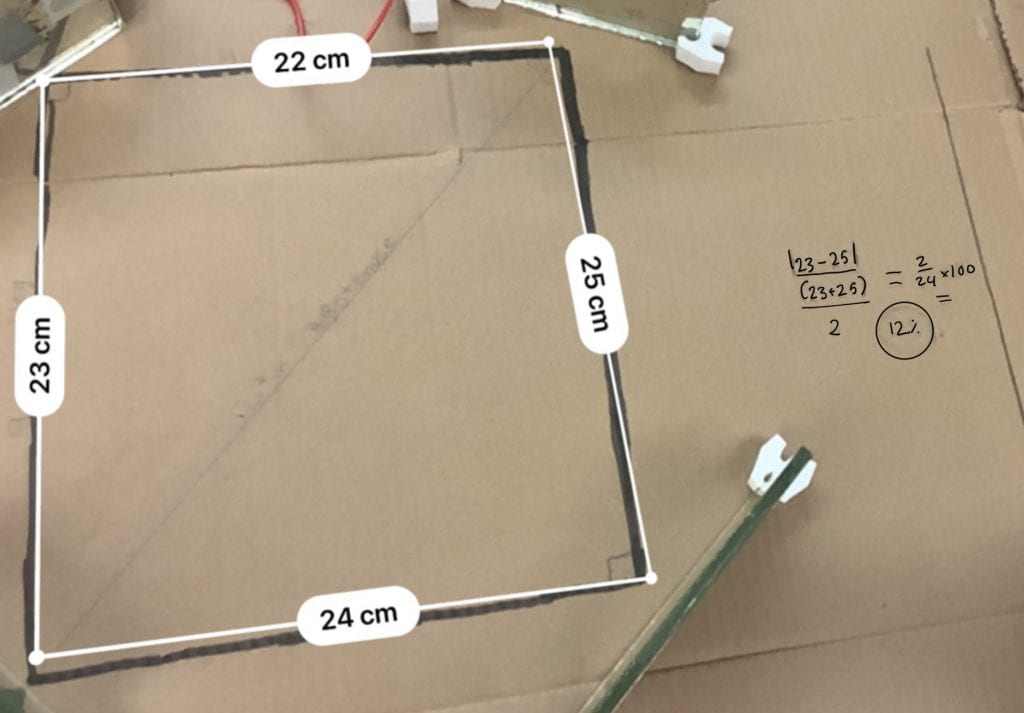DRIVING QUESTION: How can we test the Pythagorean theorem and the law of reflection?
Wowwwww! Another project has whizzed by! In this project, we learned about the Pythagorean theorem and about light (testing to see how far could bend lasers using mirrors). Throughout this blog post, I will be dissecting the parts of this project and putting them under a microscope, showing you what we did and how we did it. (I will be covering the most important Milestones, along with the Curricular Competencies and how I think I did on them).
💎 Milestone 1 – This was a really important Milestone because this is where we did our first mind-map (later we would come back to this and add to it a lot). In this Milestone, we put down all our knowledge of light and all the questions that we had about light. They could be the simplest questions like “What is light made of?” (protons by the way), to more complex ones like “Is it possible to make an infinite circle of light?” (I still don’t know the answer to that one yet).
Below is my finished mind map:
💎 Milestone 2 – This was also a really important Milestone because this is where we learned about the Pythagorean theorem (see diagram below). In this Milestone we did a lot of textbook practice to get better at the Pythagorean theorem, and then we did a Khan Academy quiz to make sure all the stuff we had learned had actually stuck in our brains. The reason that I mentioned this Milestone is because we would use these skills throughout the rest of the project a lot. We would also use the Pythagorean theorem in our final laser display.
💎 Milestone 4 – I think this might have been the most important Milestone that we did. This is where we did a blue print like draft for our final project (which is what we did in Milestone 5). In Milestone 4, we used an app called the Ray Optic Simulator. In this app, you could make any model of light using the tools that they gave you; we created a model and did a lab report on it.
This is the process that we used when completing our lab report:
Here is my lab report for Milestone 4:
💎 Milestone 5 – Like I said above, this is where we did our final project. After everyone in my group came up with their blue prints and lab reports, we combined them all into one awesome design. We started our first attempt at making a physical model with real lasers using mirrors to reflect them. In our design we also had to incorporate a right triangle to show and demonstrate the Pythagorean theorem in our final project. There was a lot of trial and error in this Milestone because one little bump to the table could move the angle of the mirrors, thereby messing up the whole design.
In the end, we created a really cool final project – we even used a fog machine to illuminate the laser beams!!
CURRICULAR COMPETENCIES
Demonstrate a sustained intellectual curiosity about a scientific topic or problem of personal interest:
I feel like I used all of my class time without distractions; I also think that I worked on my projects without disruption. An example of this is when my friend came and sat at my table. Even when she came over and we were talking, I was still doing my work without interruption.
Represent mathematical ideas in concrete, pictorial, and symbolic forms:
On this competency, I feel like I came up with a good conclusion to the law of reflection and the Pythagorean theorem. Our end result was carefully measured and precise. For example, we showed precision in our final project by using protractors (to measure the angles) and the Measure app that comes pre-installed with your iPad. To make sure that the measuring app was correct, we completed a formula (to the right in the picture below) to see how close the app measurements were compared to the real life measurements.
Below is our marked up version with the equation to the side (there a 12% difference in accuracy):
Cooperatively design projects:
For this competency, I think I did exceedingly well. Our laser display was accurately measured and labeled. I also feel like everyone in our group put in an equal amount of effort. A specific example of how we all equally contributed was when we divided up all the work, as one person would start mapping out the design while another would get the materials. Then that person and someone else would start setting up the materials. I think these examples represent how we all equally carried the weight of the work.
As we are coming to the end of this blog post, I feel it only right to mention my teammates who helped us get an amazing final project. Thank you Zach, Erick, and Colton. This project served as a really good way for me to get a better understanding of the laws of reflection and the Pythagorean theorem. I also learned how important team work is, and how much you can get done with a good team. Anyhow, this was a really fun project to do!
As always, there will be more of my projects coming soon! Peace out and stay tuned for more.
-Dana




